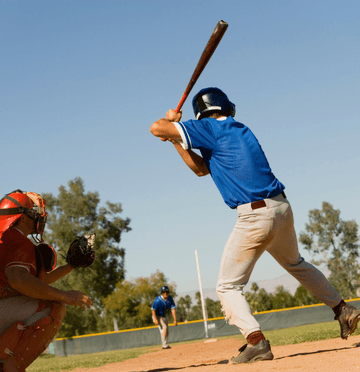Eight million (or 7.9 million to be more exact). That is the number of U.S. high school students who participate in sports at their school, a number that has increased in the past 27 years, according to the National Federation of State High School Associations’ 2016-2017 report.
That means eight million students take time from their day to attend practice, conditioning sessions, games, tournaments, fundraising events, and more.
These high school students spend countless hours focused on their sport and earning that esteemed spot on the Varsity team.
And that may be in addition to multiple sports, school-sponsored clubs, and part-time jobs taking up time in their daily lives.
(Get ready for a bunch of references from any, maybe even every, sport. Play ball!)
Nearly six out of 10 school-age children participate in extracurricular activities according to the Census Bureau, which includes sports along with other activities. Sports are the most popular after-school activity, with 35 percent of children participating in some sport between ages six and 17. Twenty-nine percent of children attend lessons, such as music or language, and 28.8 percent partake in clubs.
An infographic titled, “That Extra Push – How Extracurricular Activities Can Give You a Leg Up,” provides statistics on how extracurricular activities can help students, particularly those in high school, succeed. Students who participate in extracurriculars scored 45 points higher on the math SAT and 53 points higher on the verbal SAT, compared to those who do not participate.
The same infographic also emphasized a National Center for Education Statistics (NCES) report that revealed, “a positive correlation to student attendance, GPA, test scores, and expected educational goals.”
Multiple research studies also show how student participation in extracurricular activities helps:
And with one, or multiple, extracurricular activities filling up students’ schedules, they also need to keep grades up in order to remain eligible to participate in after-school activities, especially for sports.
Student athletes need to make the most of their time in order to keep up, particularly if their athletic aspirations go beyond high school.
Being able to slam dunk, while impressive, is not enough for students to play basketball in college. And that applies to any sport.
The NCAA maintains strict academic requirements for students hoping to play Division I sports in college. In order to be eligible, students must:
Or for those students looking to compete in Division II sports they must earn a 2.0 GPA in their core courses.
But student athletes at the collegiate level have a promising future.
According to the NCAA, “More than eight out of 10 student athletes will earn a bachelor’s degree, and more than 35 percent will earn a postgraduate degree.” Student athletes also have strong graduation rate statistics, with “graduation success rates [at] 86 percent in Division I, 71 percent in Division II and 87 percent in Division III.”
And it all goes back to high school grades.
High school athletes often spend an hour or more (both ways) traveling to their sporting events on the school bus. And with their hectic schedules, schools can give student athletes some of those lost hours back.
Help student athletes keep up with homework by providing school bus Wi-Fi. The Kajeet SmartBus™ solution provides educational, filtered Wi-Fi on the school bus, allowing students to get homework done while traveling.
The CIPA-compliant filters ensure your students access education-only content, just like they would in the classroom. And there are two different ways to use the SmartBus.
Either way, school bus Wi-Fi is the winning touchdown your student athletes need. Help your student athletes succeed both on and off the field and get started today.


